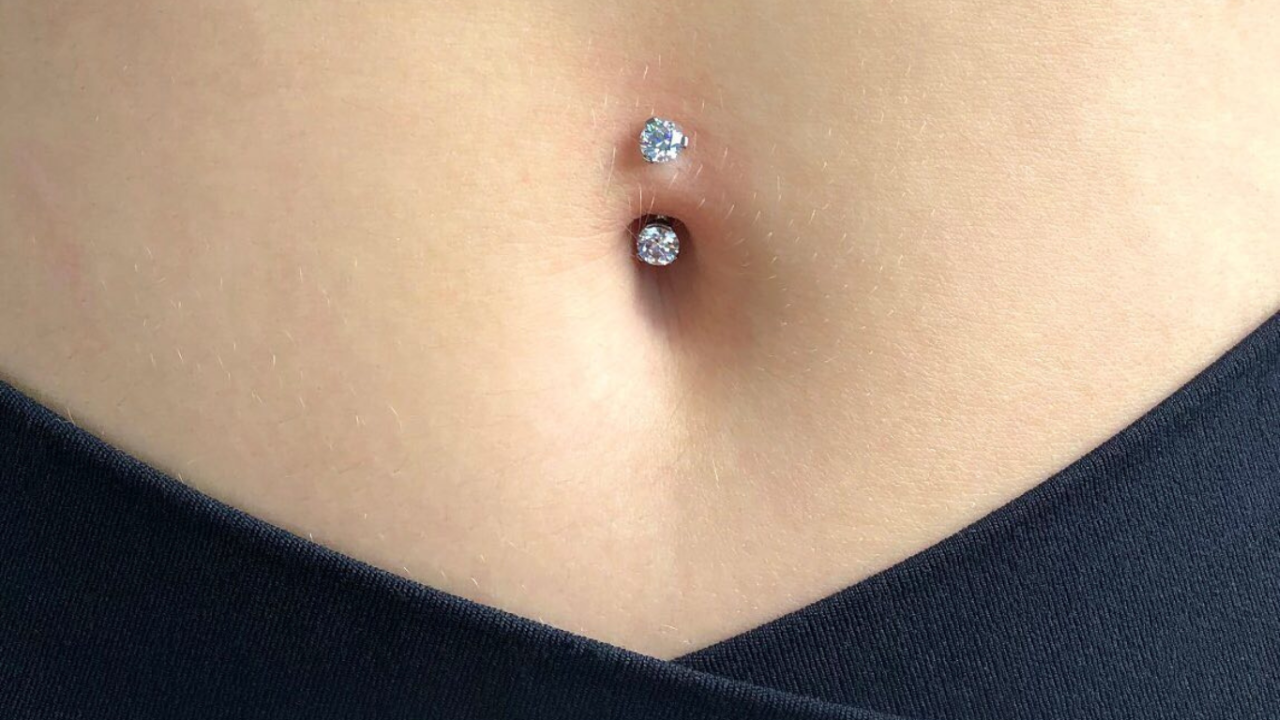In this blog post, we're talking about navel anatomy and exploring two popular navel piercing styles: traditional and floating navel piercings.
What is Anatomy?
Anatomy is defined as the study of the structure or internal workings of something.
Since individual anatomy varies greatly, the suitability of specific piercing styles will differ from person to person. When you come in for a piercing, one of our piercers will assess your anatomy and guide you on the most suitable piercing style based on their expertise and knowledge.
What is the Piercer Looking For?
When a piercer examines your anatomy, it's to look for specific physical qualities. Certain qualities determine if your navel can be pierced safely and successfully. First, they’ll check for a prominent flap of skin above the navel that can securely hold the jewelry. The depth of your navel is also important. It has to be deep enough for the jewelry to sit in. In addition to structure, the piercer is looking for any scarring from previous piercings or surgeries that could interfere with healing or proper placement. They’ll observe how your skin moves when you sit, stand, or bend to ensure the piercing won’t undergo excessive tension or friction. Finally, they’ll evaluate the symmetry of your navel to make sure the piercing will be aesthetically pleasing and well-centred.
Traditional Navel Piercings

Traditional navel piercings are the most popular and classic style. They involve a single puncture through the skin above the navel and below the upper rim, resulting in a vertical hole. The jewelry rests inside the hole, with the decorative ends sitting on the top and bottom of the navel.
Traditional navel piercings are well-suited for a variety of anatomies. However, the ideal anatomy for this style includes a distinct fold or crease above the navel, known as the upper rim or lip. This fold allows for a secure placement of the jewelry. The depth of your navel is also something to consider. A moderately deep navel provides enough tissue for the piercing to be comfortably placed without risking excessive pressure on the jewelry.
Floating Navel Piercings

Floating navel piercings, also known as inverse navel piercings or top-down navel piercings, are a little different. The piercing is placed at the top of the navel and passes through the upper rim, creating the illusion of a floating piece of jewelry on the top of the navel ridge. The jewelry typically consists of a curved barbell with a small disk for a base and a larger top. Eliminating the large bottom piece of the jewelry ensures that pressure won’t be applied to the piercing channel, making healing easier and more comfortable. This piercing style is typically suitable for those with a shallow or flat navel, where the upper rim is not as pronounced.
Conclusion
Remember, the ultimate goal is to achieve a safe and well-placed piercing that will heal successfully, and complements your body. Prioritize consultation and communication with your piercer to ensure the best possible outcome.
